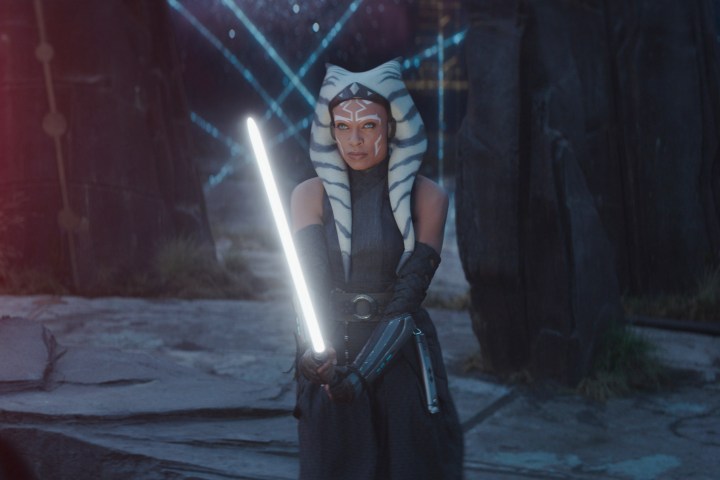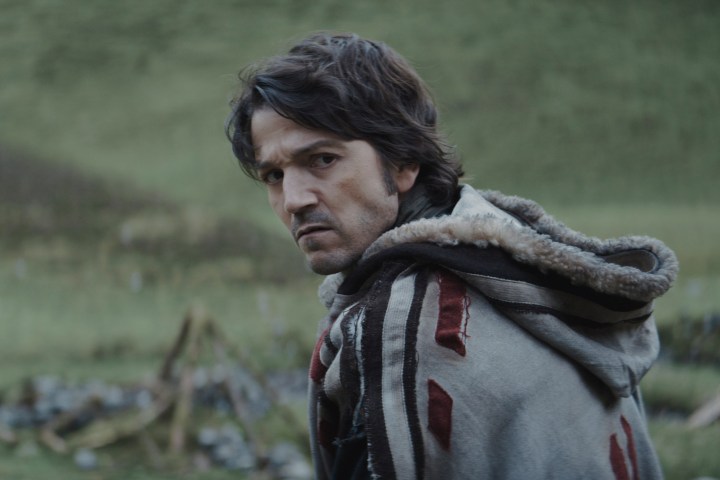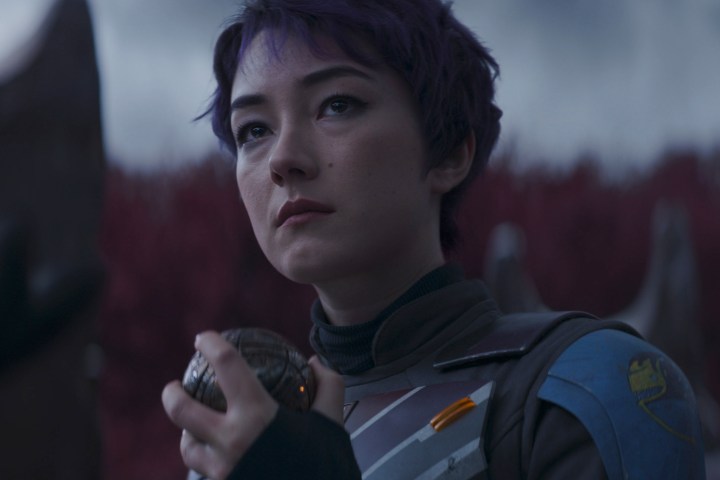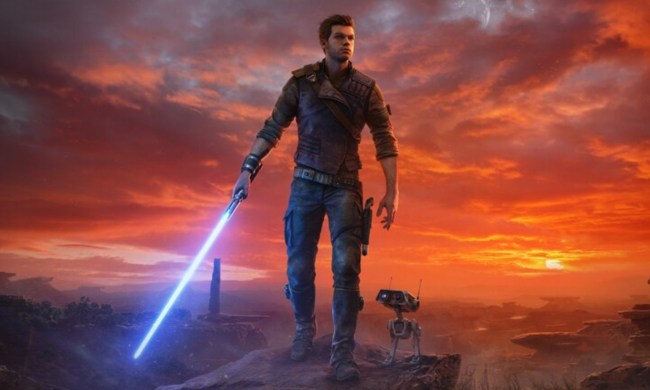
Disney+’s Ahsoka is a lot of things: A quasi-sequel to Star Wars Rebels, a spinoff of The Mandalorian, a rollicking space adventure. Above all else, though, Ahsoka is a show made by and for Star Wars fans. Created by George Lucas’ chosen protégé, Dave Filoni, the series is overflowing with details, Easter eggs, and characters from past Star Wars films and TV shows — namely, Star Wars: The Clone Wars and Rebels. These various references have all been collected in a story that seems designed to serve as the bridge between the Rebels finale and Filoni’s now-announced Star Wars crossover film, which will purportedly close out the New Republic story first introduced in The Mandalorian.
At the center of said story is the villainous Grand Admiral Thrawn (Lars Mikkelsen) and the Imperial Remnant’s quest to bring him back into the fold. That mission is the driving narrative force of Ahsoka, which pits the show’s heroes against those who wish to find Thrawn and rescue him from his years-long exile in a foreign galaxy. The series is, in other words, a lot less about Ahsoka Tano (Rosario Dawson) and her personal journey than its title would lead you to believe. In fact, of all of its concerns, Ahsoka’s characters feel increasingly less like its top priority.
In that respect, Ahsoka stands as the polar opposite of Andor, the initially underseen live-action Star Wars show that premiered to widespread acclaim last year. Unlike Ahsoka, Andor couldn’t care less about the greater Star Wars universe. Over the course of its 12-episode first season, the Disney+ series has just one thing on its mind: its eponymous antihero, Cassian Andor (Diego Luna). That’s not only what separates Andor from Ahsoka, but it’s also what makes the former great and the latter so dramatically inert.
Why Andor was so great … and why it’s so hard to emulate

Andor’s first season is essentially divided into four chapters, but regardless of whether it’s forcing him to break out of an Imperial prison or participate in a risky heist, the Disney+ series never loses sight of its eponymous hero. When the season begins, Diego Luna’s Cassian is a non-interventionist hustler with little-to-no interest in taking down the Empire that wiped out his entire family and killed his adoptive father. Everything that happens throughout Andor season 1 is, therefore, designed to push Cassian one step closer to becoming the radicalized rebel fans met for the first time in 2016’s Rogue One: A Star Wars Story.
Through Cassian’s journey, the series is able to make a broader point about how a rebellion becomes a revolution, and it supports that argument with a pair of secondary storylines involving behind-the-scenes rebels like Mon Mothma (Genevieve O’Reilly) and Luthen Rael (Stellan Skarsgård). The season also creates counters to its Mon Mothma, Luthen, and Cassian stories, all of which are united by the same philosophical ideas, in the form of characters like Syril Karn (Kyle Soller) and Dedra Meero (Denise Gough), who bring a human face to the fascistic systems that Andor’s heroes are trying to upend. All of which is to say that, as broad as its points about oppression and freedom are, Andor’s themes only land as forcefully as they do because they stem directly from the very specific fears, desires, and dreams of its central heroes and villains.
Ahsoka prioritizes spectacle over character development

For its part, Ahsoka has struggled to connect its titular former Jedi’s story to its larger, franchise-centric plot. Across the series’ initial installments, Rosario Dawson’s Ahsoka hasn’t been given much of a personality or personal struggle. Her entire story has been tied to her master-apprentice relationship with Sabine Wren (Natasha Liu Bordizzo), which is informed by a previous falling out between them that viewers haven’t been given any real insight into yet. Other characters have suggested that Ahsoka isn’t trusting enough of Sabine, but every setback that has happened throughout the series’ first season so far has been because Ahsoka has put too much faith in her student.
Sabine’s decision to ignore her master’s warnings and give Baylan Skoll (Ray Stevenson) his prized star map in Ahsoka‘s fourth episode is frustrating for this very reason. Many have compared the scene in question to Star-Lord’s misguided attack on Thanos in Avengers: Infinity War, but that decision notably ties into and reinforces its film’s core theme (i.e., that heroes have to be willing to put their own emotions and interests aside for the greater good). Sabine’s decision, conversely, carries no thematic weight because Ahsoka has yet to present any kind of philosophical, moral, or emotional argument.
The moment doesn’t speak to Ahsoka’s failure to trust Sabine, nor does it reinforce any broader ideas about the value of putting one’s personal relationships over the greater good. It just makes Sabine seem even more foolish and self-interested than she already did. Baylan’s offhanded remark about how one of Ahsoka’s past mistakes resulted in the deaths of Sabine’s Mandalorian family members, meanwhile, only further reveals just how undercooked the show’s core relationship has been up to this point. It is, frankly, hard to be genuinely invested in Ahsoka and Sabine’s bond when so much of it depends on events that viewers have not been privy to. Ahsoka itself hasn’t devoted the time necessary to make up for that fact, either.
The way forward

As occasionally entertaining as it’s been so far, Ahsoka has failed to ground its biggest moments in the emotions and personal journeys of its characters. More often than not, the show’s heroes have felt like nothing more than pieces being moved around on a board — one designed to further a larger, Thrawn-led conflict. That’s been particularly disappointing to see, especially coming off Andor, a show that frequently feels only tangentially related to the Star Wars universe at large, but which imbues its character-driven story with so much emotion and thematic weight that it’s impossible to ever fall out of sync with it.
Suffice it to say, one need only watch an episode of Andor and an episode of Ahsoka to see what it looks like when a TV show prioritizes its plot over its characters and vice versa. Unfortunately, no amount of Easter eggs can make up for a mistake like that.
New episodes of Ahsoka premiere Tuesday nights on Disney+. Andor season 1 is available to stream now on the platform.



